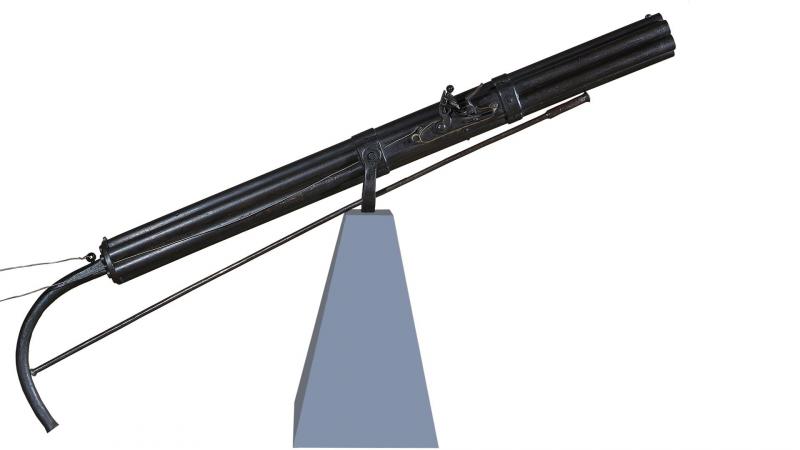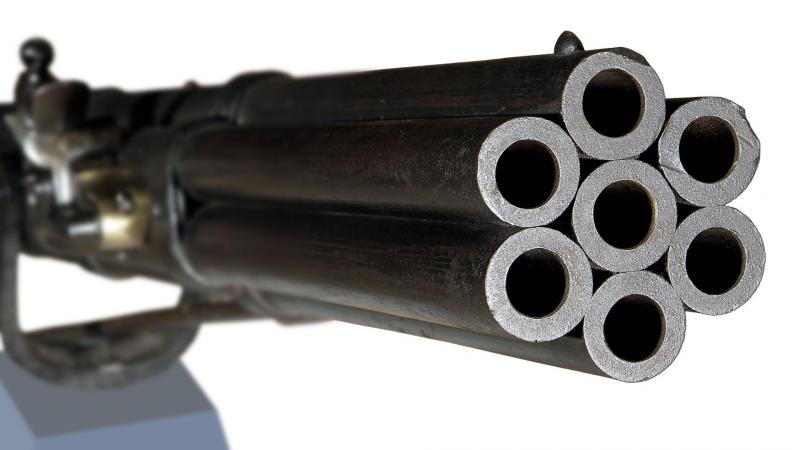7-barrel flint machine gun, with superimposed loads
Donation from the gunsmith John P. Moore Son, 204, Broadway, New York, 1887.
This archaic machine gun comprises seven barrels; these are assembled in a bundle, mounted on a pivot and equipped with a manoeuvrable tail. Each barrel receives a pile of 32 round lead balls, each resting on its powder load and separated from the next with a filling material. By activating the rod that strikes the dog, the ball closest to the mouth of each barrel is fired, for a salvo of seven projectiles. Then, by nature of a knock-on effect, the firing is communicated backwards to the other charges, which leave successively in groups of seven until the ammunition is exhausted. The firing lasts for almost 2 minutes and the 224 projectiles are fired with no possibility of interruption. Once the weapon is empty, another, which has been loaded in advance, should be used.
Invented in 1813 by Joseph Chambers from West Middleton, Pennsylvania (USA), only a few dozen examples of this weapon were made for the United States Marines during the conflict with England (1812–1814) and for the State of Pennsylvania.
Engaged using a pivot in a metal sleeve, which is conserved in a rail, this machine gun was able to sweep the deck and the tops of ships that displayed enemy sails. However, using it was not without risk, because of the danger of several charges simultaneous;y exploding in the same barrel. This weapon enjoyed little success with the American and European military authorities to which it was presented.
This example is the only one that remains today.
- Home
- The Museum’s collections
- Weapons
- 7-barrel flint machine gun, with superimposed loads

